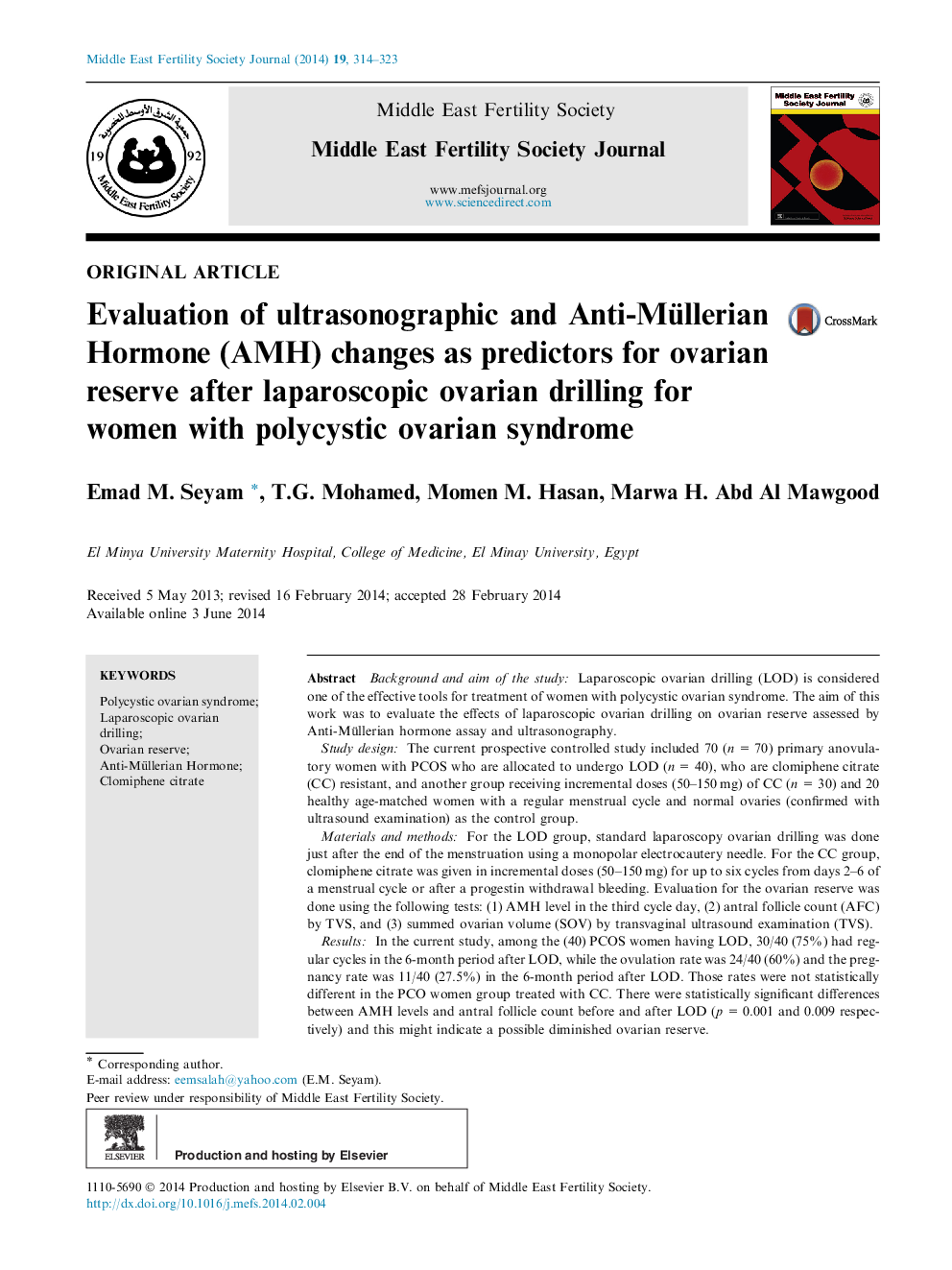| کد مقاله | کد نشریه | سال انتشار | مقاله انگلیسی | نسخه تمام متن |
|---|---|---|---|---|
| 3966121 | 1256138 | 2014 | 10 صفحه PDF | دانلود رایگان |

Background and aim of the studyLaparoscopic ovarian drilling (LOD) is considered one of the effective tools for treatment of women with polycystic ovarian syndrome. The aim of this work was to evaluate the effects of laparoscopic ovarian drilling on ovarian reserve assessed by Anti-Müllerian hormone assay and ultrasonography.Study designThe current prospective controlled study included 70 (n = 70) primary anovulatory women with PCOS who are allocated to undergo LOD (n = 40), who are clomiphene citrate (CC) resistant, and another group receiving incremental doses (50–150 mg) of CC (n = 30) and 20 healthy age-matched women with a regular menstrual cycle and normal ovaries (confirmed with ultrasound examination) as the control group.Materials and methodsFor the LOD group, standard laparoscopy ovarian drilling was done just after the end of the menstruation using a monopolar electrocautery needle. For the CC group, clomiphene citrate was given in incremental doses (50–150 mg) for up to six cycles from days 2–6 of a menstrual cycle or after a progestin withdrawal bleeding. Evaluation for the ovarian reserve was done using the following tests: (1) AMH level in the third cycle day, (2) antral follicle count (AFC) by TVS, and (3) summed ovarian volume (SOV) by transvaginal ultrasound examination (TVS).ResultsIn the current study, among the (40) PCOS women having LOD, 30/40 (75%) had regular cycles in the 6-month period after LOD, while the ovulation rate was 24/40 (60%) and the pregnancy rate was 11/40 (27.5%) in the 6-month period after LOD. Those rates were not statistically different in the PCO women group treated with CC. There were statistically significant differences between AMH levels and antral follicle count before and after LOD (p = 0.001 and 0.009 respectively) and this might indicate a possible diminished ovarian reserve.ConclusionAMH and AFC are reliable markers for assessment of the ovarian reserve and measuring them for women with anovulatory PCOS undergoing LOD may provide a useful tool in evaluating the outcome of LOD.
Journal: Middle East Fertility Society Journal - Volume 19, Issue 4, December 2014, Pages 314–323